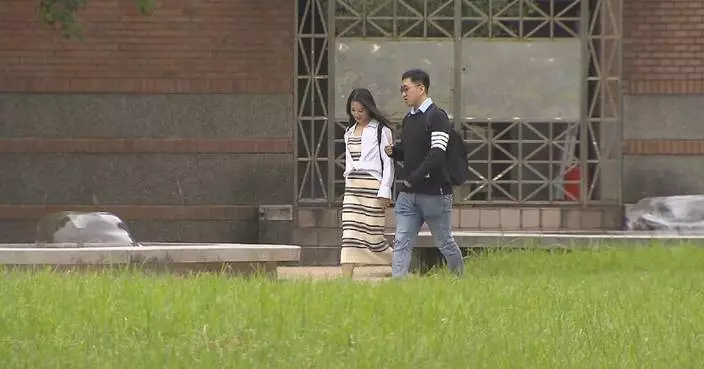China's box office revenue during the May Day holiday surpassed 1.5 billion yuan (about 210 million U.S. dollars) as of 13:13 on Sunday, according to box office monitoring application Beacon Pro.
Moviegoing has become an important leisure activity for Chinese residents during holidays, making the five-day May Day break a crucial period for the box office and a focus of promotional efforts of the industry.
Eight new films were released for the five-day holiday, which began on Wednesday. The films cover genres including animation, action, comedy, thriller, and romance.
The action thriller "Formed Police Unit" claimed the top spot on the daily box office chart in the Chinese mainland, grossing 394 million yuan (about 54.44 million U.S. dollars) in box office revenue by Sunday. It narrates the story of the Chinese peacekeeping police.
Chinese comedy "The Last Frenzy" ranked second, with the box office revenue reaching 370 million yuan (51.22 million U.S. dollars). The film, exploring life's choices in the face of death, raked in 84.5 million yuan (about 12 million U.S. dollars) on the third day of its release.
Hong Kong action crime thriller "Twilight of the Warriors: Walled In" came in third with a holiday season box office earning of 314 million yuan (about 43.4 million U.S. dollars) as of Sunday.

China's box office revenue surpasses 1.5 bln yuan during May Day holiday
Chinese scientists have recently worked together and rebuilt the face of an ancient Chinese ethnic minority emperor via cutting-edge DNA technology.
Emperor Wu of the Xianbei-led Northern Zhou Dynasty (557-581), also known as Yuwen Yong, was an ambitious leader who died at 36. He belonged to the Xianbei nomadic group, which originated from the Mongolian Plateau.
The tomb of the emperor was discovered in 1993 in a village of the city of Xianyang in northwest China's Shaanxi Province. His skull and bones were discovered during an excavation held in 1994 and 1995 at the site of his tomb.
In late March this year, scientists led by the Shaanxi Provincial Institute of Archaeology and the Institute of Archaeological Science of Fudan University managed to decode key features of the emperor and speculate about his cause of death. The emperor might have died from chronic arsenic poisoning due to long-term use of a pellet, which was believed by ancient people to achieve eternal life.
"First, the skeleton can be used to determine age. Second, in terms of age and gender, some pathological research can also be done to see if he had any fractures or other (diseases)," said Zhang Jianlin, a researcher from the Shaanxi Provincial Institute of Archaeology.
Obtaining high-quality genomic data is crucial for restoring the face. Through DNA paleogenomics techniques and optimized DNA extraction, database building and capture methods, more history was revealed.
"First, we have done the shorter fragments enrichment method, which is a DNA extraction method. In addition, we have developed some more sensitive database building method suitable for ancient samples with short fragments. You can regard it as a method to amplify the genetic signal, the extracted DNA. The third is that we have developed a capture method that is more suitable for this kind of highly degraded ancient samples. So we have optimized and improved our approach from three aspects at the same time," said Wen Shaoqing, an associate professor of the Institute of Archaeological Science of Fudan University.
The reconstructed face showed that Yuwen Yong had black hair, yellow skin and brown eyes, while his appearance was typical for people from East or Northeast Asia.
Wen said that with the help of the DNA technology, the accuracy of facial restoration can reach 90 percent.
"As for the accuracy of (facial restoration), the current situation is that if there is a skull as a basis, its accuracy will be relatively high," said Wen.

Scientists rebuild face of ancient emperor using advanced DNA technology










